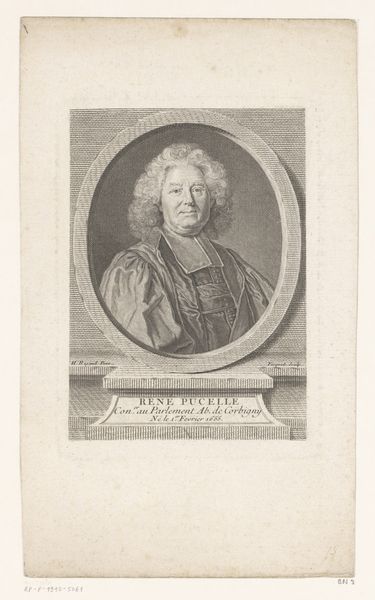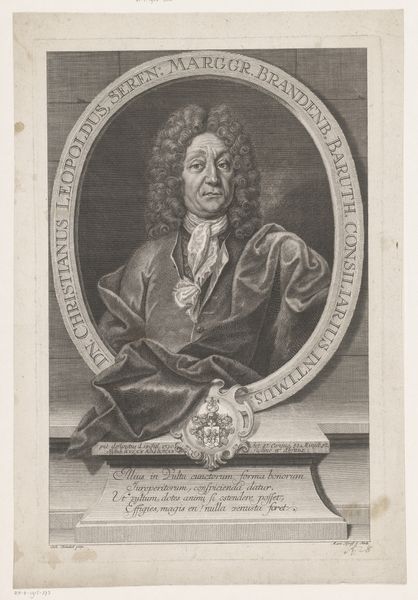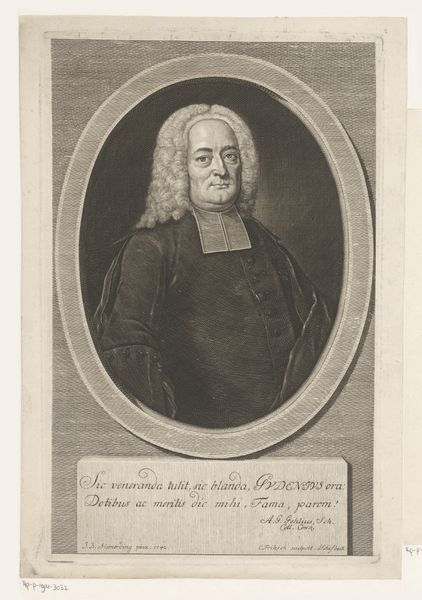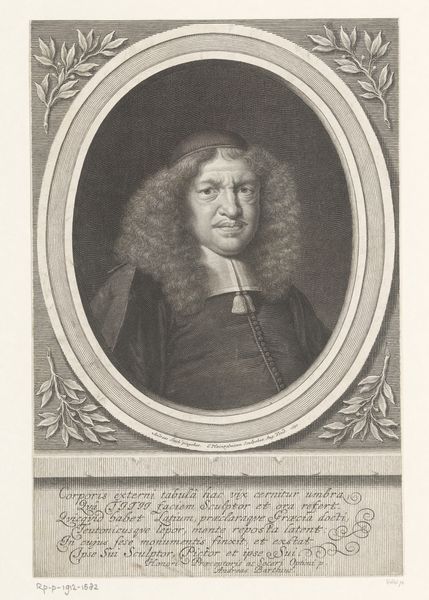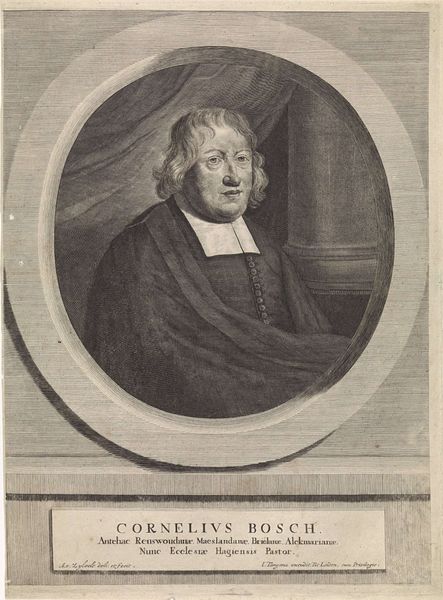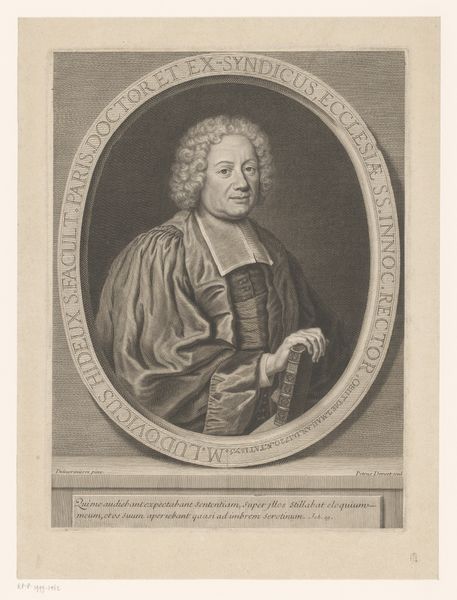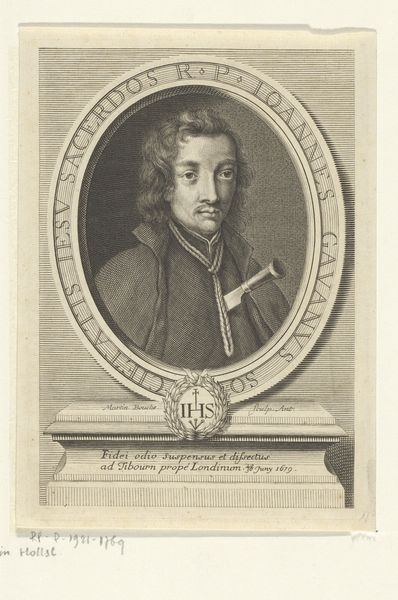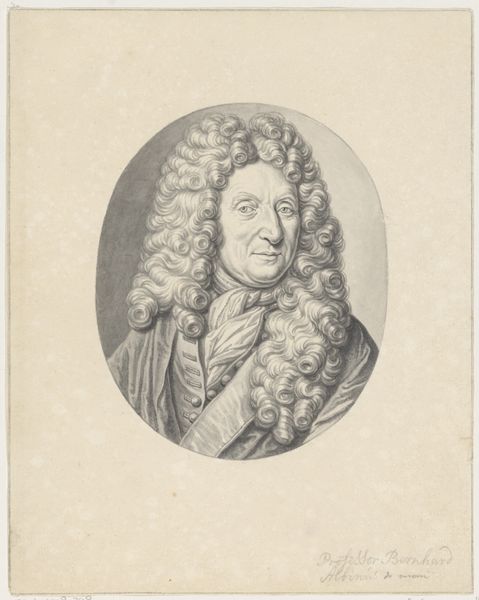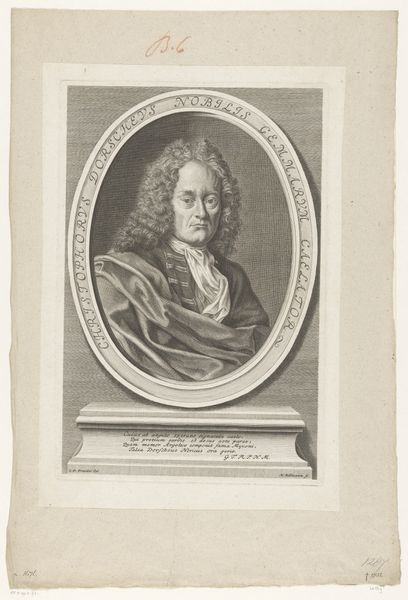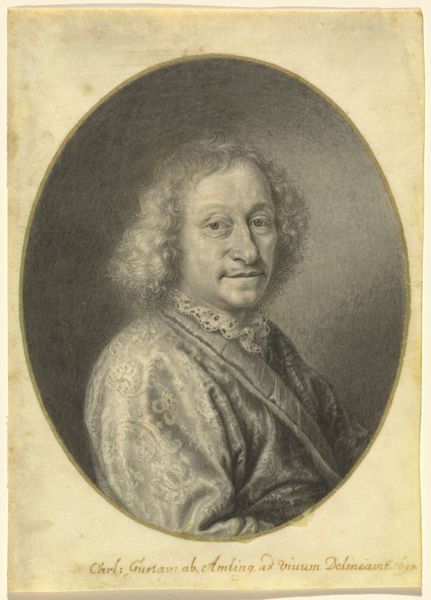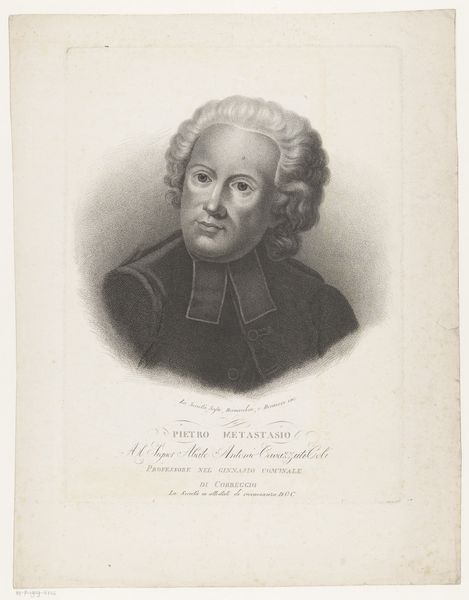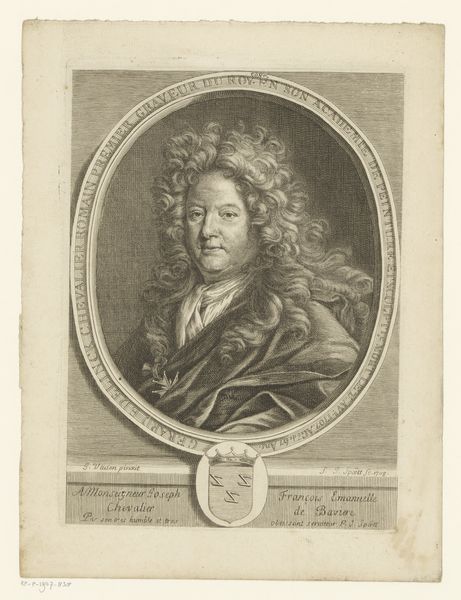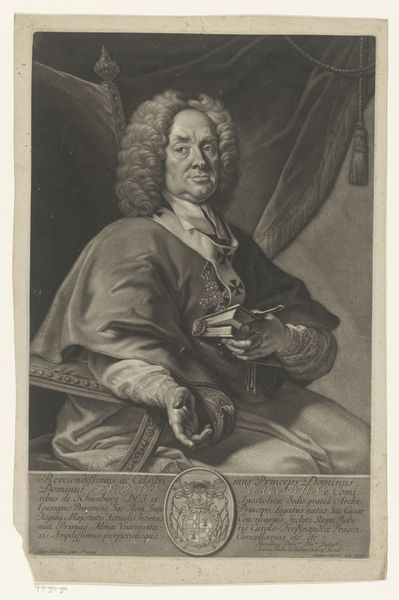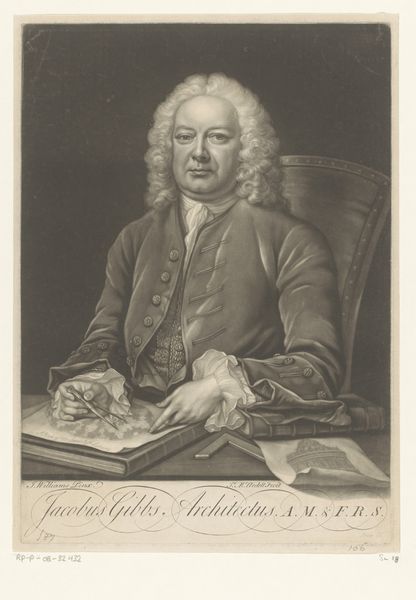
print, engraving
#
portrait
#
baroque
# print
#
old engraving style
#
history-painting
#
engraving
Dimensions: height 221 mm, width 167 mm
Copyright: Rijks Museum: Open Domain
Editor: This is a Baroque print, "Portret van hellenist Anton Maria Salvini," dating from around 1677 to 1730. It looks like an engraving. It's striking how formal and composed it is, with the elaborate frame surrounding the subject. What can you tell me about it? Curator: It is interesting to consider this portrait as a form of constructed identity. Note Salvini’s confident gaze. The trappings of classicism, reflected in the engraved frame and Latin inscription, worked to position Salvini within a specific intellectual lineage and social hierarchy. But how do we read that now? Does the very act of creating and circulating such images reinforce existing power structures, or can it, perhaps, subvert them? Editor: That’s a complex idea! So, you're saying the image doesn’t just show Salvini but also communicates something about his position and perhaps the values of that time? Curator: Exactly! The Baroque period itself was a time of intense religious and political upheaval, and portraiture served as a means to assert control and project authority. Consider how the selection of visual tropes-- the style of dress, the format of the inscription-- functioned to place Salvini within a specific discourse of power. Who gets to be remembered, and how? Whose stories are deemed worthy of being etched into history – quite literally, in this case? Editor: That’s a good point; these prints would have been circulated to reinforce his reputation. Now, when I look at it, I also wonder what stories were not told through similar portraits? Curator: Precisely! The silences and absences in art history are often as telling as the narratives that are prominently displayed. Understanding that opens new perspectives. Editor: I’ve never thought of portraits that way, it is fascinating. Curator: Indeed, viewing historical portraiture through the lens of social and political power reveals complexities we might otherwise overlook.
Comments
No comments
Be the first to comment and join the conversation on the ultimate creative platform.
